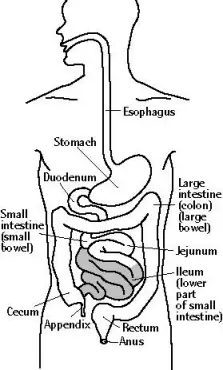
Homo sapiens is said to be the most sophisticated creature of the Nature, a crown of life evolution on Earth Planet. All the systems of the human body and the inner processes taking place in it are so complicated and well-developed, that till now people cannot fully understand all the aspects of their living, or technically speaking “functioning”; and at least explain if not fix all the malfunctions, commonly referred to as illnesses or health disorders. For thousands of years the best minds of the Mankind have been investigating the human body, definitely making a great progress in defining causes of many of the health problems and finding effective solutions to fix them. However, there are still many unanswered questions, unexplained disorders and undiscovered remedies.
One of such disorders, the cause of which is still undefined and, consequently, the treatment is still undiscovered, is the inflammatory bowel disease, usually abbreviated as IBD. In fact, this is a group of disorders, characterised with chronic inflammation (swelling) of the digestive tract and the idiopathic origin (with no known cause). Commonly, the disease is manifested through such symptoms as abdominal pain and cramping, fatigue, diarrhoea, blood in the stool, weight loss or loss of appetite, fever and even anemia. As the consequences of such chronic inflammatory process, intestinal bleeding, as well as sores and ulcers, may develop.
With more than 1-2 million people, suffering from inflammatory bowel disease in the USA, and about 200 000 cases of IBD in Canada, it is still unknown what causes the disorder. There are many theories, mentioning poor eating habits, stress, genetic predisposition, and antibiotics as the possible triggers of the disease – however, the case on the exact cause of IBD is still under scientific investigation.
For the time being, scientists defined two most common subtypes of the inflammatory bowel diesese – Crohn’s disease and ulcerative colitis. Being close in symptoms, the key difference between these two disorders is the location, where inflammation takes place and the nature of inflammatory process.
Crohn’s disease is a chronic inflammatory condition, which can affect any area of the human digestive tract from the mouth to the anus. However, most commonly the disorder targets a part of intestines, called the ileum, which is the lower part of the small intestine.
Ulcerative colitis, on the other hand, has smaller area of localisation. Mostly, the inflammation starts on the area of just a few inches of the rectum (the very end of large intestine), but with time it can affect the lining of the whole colon (large intestine or bowel).

From the point of view of the nature of inflammatory processes due to Crohn’s disease and ulcerative colitis – there is also a difference. While ulcerative colitis usually targets only the lining of the inner layer of the intestines, Crohn’s disease may cause inflammation of the whole wall of the intestines, and thus may result in more serious changes in the digestive tract.
Summing up the overview of inflammatory bowel disease and Crohn’s disease and ulcerative colitis as its main subtypes, I would like to say that indeed the more we know – the more we understand how much we still do not know. However, we all keep on learning, aren’t we?
Nick
Your Feedback
Write us your experience or opinion that we may publish on this site:
Your message: [ HTML is not accepted ]
| Tip for you : Sign-in with Your OpenID and post faster, easier and with easy access to all your past posts. | |
|
Your Nick: |
















